Violence is often preceded by a mental health crisis. How a team from Henrico may have found a solution.
By Joan Tupponce | Photos by Ash Daniel
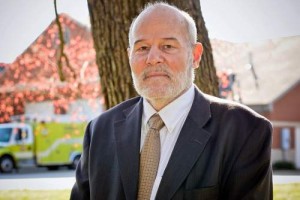
Sam was intoxicated and loud, shouting words and sentences that didn’t make sense, hotel staff told police. A Vietnam veteran, Sam suffers from post-traumatic stress disorder and had stopped taking his prescribed medication. Instead he was self-medicating with alcohol and drugs. Sam had been kicked out of his apartment because of his disruptive behavior and was now staying at the motel.
On Eddington’s knock, Sam lumbered to the door and cracked it open slightly, the door chain still locked. Through the 6-inch opening, Eddington saw Sam was disheveled and reeked of alcohol. He hadn’t shaved in days. The room was littered with beer cans and bottles. “He wasn’t at his best,” Eddington recalls. “He couldn’t speak coherently. He was unable to focus his thoughts. He was rambling about Vietnam, things he saw on the news and the fact that he didn’t like the police.”
Eddington, trained to help people suffering mental health crises, told Sam he was there to help him and offer his services. “I gave him a card and told him I would come back,” Eddington says. “He didn’t open the chain but he did take the card, and then he shut the door.”
On his next visit Sam let him in the doorway, but no farther. “I told him my name is Dustin,” Eddington says. “I tried to get him to respond in the same way but he wanted me to call him ‘Mr.,’ still in the military fashion.”
 The conversation ended quickly and Eddington left with the promise to return. Less than a week later, he was working at the Crisis Intervention Team’s receiving center in the emergency room at Parham Doctors’ Hospital when Sam was brought in under a custody order for a mental evaluation. “He was covered in a sheet from head to toe like a mummy,” Eddington remembers. “He wouldn’t let anyone touch him or talk to him. When I said this is me, Dustin, he peeked through the cover.”
The conversation ended quickly and Eddington left with the promise to return. Less than a week later, he was working at the Crisis Intervention Team’s receiving center in the emergency room at Parham Doctors’ Hospital when Sam was brought in under a custody order for a mental evaluation. “He was covered in a sheet from head to toe like a mummy,” Eddington remembers. “He wouldn’t let anyone touch him or talk to him. When I said this is me, Dustin, he peeked through the cover.”
Sam managed to sit up and then talked with the officer for nearly two hours in a rambling conversation about the military and his service. Eddington listened and then talked to Sam about dealing with stress. “I wanted to give him the respect and dignity he deserved,” Eddington says. Sam was later admitted to a hospital.
Before the creation of the Crisis Intervention Team, Sam would have likely ended up in a jail cell. Officers responding to repeated calls for disorderly conduct would probably have arrested Sam. He would not have been offered community resources or been given treatment options, Eddington says. And chances are good Sam’s condition would have only gotten worse behind bars.
Eddington ran into Sam a couple of months later. He found the veteran working at a Henrico retail store. He was back on his medications and had secured a job. Sam scurried up to the officer and immediately began shaking his hand and calling him by his first name, Dustin. “I was taken aback,” Eddington says. “That doesn’t happen. He looked good and he was happy. He kept thanking me and told me he appreciated me taking the time to talk to him. He had turned his life around. I was pleased and happy.”
A community outreach officer with Henrico’s Crisis Intervention Team, Eddington is part of a groundbreaking approach to helping people suffering from mental health crises. The team includes a cross-section of mental health, police and fire officials as well as members of the Henrico Sheriff’s Office and consumer advocacy and support groups.
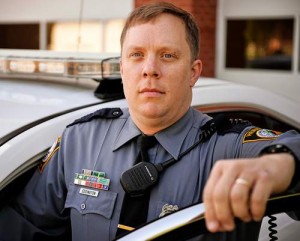
“We realized we were responding to the same people in crisis but we weren’t talking to each other about them,” Wood says. “There was a lack of coordination and mutual ownership.”
They were aware of several systems in use around the country that paired mental health and police. The Crisis Intervention Team (CIT) concept was just one of those systems. “We researched all of them and looked at the options,” Moon says. “The CIT program in Memphis had the most traction.” Moon and the others visited Charlottesville, where a similar program had been adopted, and decided the Crisis Intervention Team model would be a good fit for Henrico.
The treatment of people with mental health issues has been an ongoing debate for many years. It was brought to national attention in 2007 after the Virginia Tech massacre where senior Seung-Hui Cho shot and killed 32 people. Cho had been declared mentally ill in 2005 after a stalking incident. A professor at the school had asked him to seek counseling prior to his killing spree. But the system failed to identify Cho as a serious threat and get him the treatment he needed.
The subject is once again top-of-mind because of state Sen. R. Creigh Deeds, who last year was stabbed several times by his mentally ill 24-year-old son, Gus, who minutes later took his own life. The tragic incident happened after the expiration of an emergency custody order that would have required Gus to undergo a psychiatric evaluation in a mental health facility. After the tragedy, Deeds helped spearhead a four-year-study of the state’s mental health system.
Henrico’s crisis-intervention program started training first responders from the multiple county agencies on mental health issues in 2008. The Henrico team also trains first responders from other jurisdictions and agencies. To date, Henrico’s Crisis Intervention Team has trained close to 1,000 first responders from more than 27 agencies. The one-week, 40-hour training classes are held at the University of Richmond and touch on a variety of mental health subjects, including medicines that might impact mental illness, substance abuse, post-traumatic stress disorder, suicide and issues with juveniles.
“We are working to erase the stigma of mental illness so we are better able to assist people in crisis and help them move to mental health recovery,” Moon says.
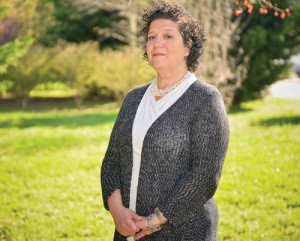
There are more than 30 crisis-intervention programs in Virginia but Henrico has “the most frequent training program in the state,” Moon says, noting there is also abbreviated training for 911 dispatchers. “We offer training monthly.” Training in other agencies around the state – Chesterfield, Richmond and Hanover are among the jurisdictions that now have similar programs – may range from once a year to once a quarter. “There is no set frequency that you have to follow,” Moon says.
The Henrico program has won several awards, including The Virginia Crisis Intervention Team Coalition Award for CIT Program of the Year in 2012 and The National Association of Counties Achievement Award for Crisis Intervention Team – Mobile Response Team (CIT MRT) presented to Henrico County in 2013.
Henrico’s Crisis Intervention Team is the first known program of its kind in the nation to integrate fire and emergency services. It’s also the first in the area to have a Crisis Receiving Center, located at Parham Doctors’ Hospital, where people receive a mental health assessment as well as a medical assessment.
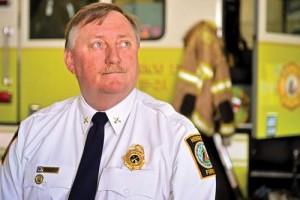
“The key is the training and awareness of the CIT team,” Moon says. “They are able to identify and react better now because of that training. They feel increasingly confident in assisting people in crisis and they have a great awareness of how to access other agencies and resources because of CIT.”
Police officers, and often firefighters, now routinely see a minimum of six documented mental health-related calls a day.
When officers respond to one of these calls, they try to “slow things down, take the time and ask questions,” Eddington says. “We take each on a case-by-case basis. We can spend several hours with them. We make sure they are on the right track.”
The type of calls CIT responds to are wide ranging, from depression to hoarding. Some people, for example, may have lost their support system; some, like Sam, may have gone off of their medications. “We are looking for creative, innovative solutions and problem solving to help people,” explains Moon, noting that some people in crisis can be a risk to themselves or others.
“We will even get with the doctor and try to get them a different medication if they are having side effects or can’t afford it,” Eddington says.
Fire officers and advanced life support providers also take part in CIT training. “We train our medics to know what kind of medicines people are taking and what those medicines can do,” Samuels says. “We provide advocacy for the patient.”
Fire officers bring a different aspect to the team because they are viewed as “less threatening than a police officer,” adds Samuels. “A person in crisis doesn’t want to go to jail. We try to explain we are trying to get them help. We are helpers. Police officers are there, making sure people are safe.”
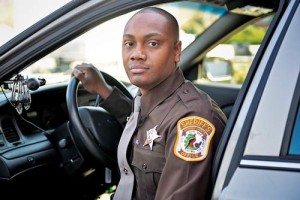
David Rockwell is a peer provider and support services specialist for Henrico Area Mental Health & Developmental Services who, in the past, received services from the county for bipolar disorder. “Mental health counselors taught me that I could re-engage with my life,” he says. Part of his job is manning the Crisis Receiving Center and talking with patients. He also helps to link them with services in the community. “I don’t know what it’s like to be them but I do know what it’s like to be in crisis,” Rockwell says. “I do a lot of listening to the person’s story so they feel heard.”
You have to work quickly when someone is in crisis, he adds.
“You have to introduce them to the concept of recovery,” Rockwell says, “let them know they are not alone. I refer to the people I meet with as peers because I am walking beside them.”
Working with people in crisis is deeply personal for him. “I have walked this walk. I know what it’s like to feel so badly,” he says, adding that he tries to give people a hand and hope. “I have to share some of my story to be effective and that is hard sometimes, but it’s always helpful when you make that connection with someone.”
